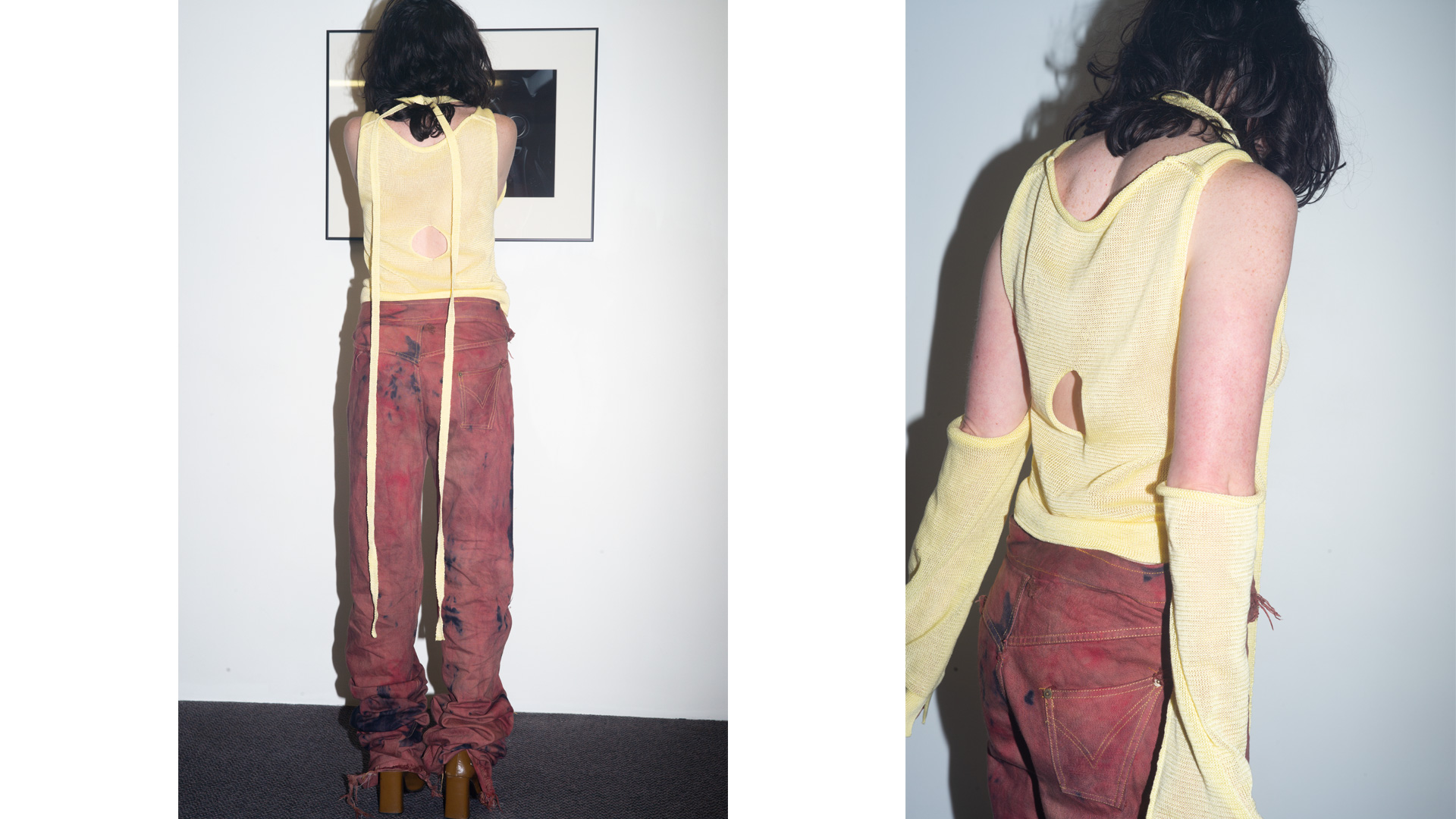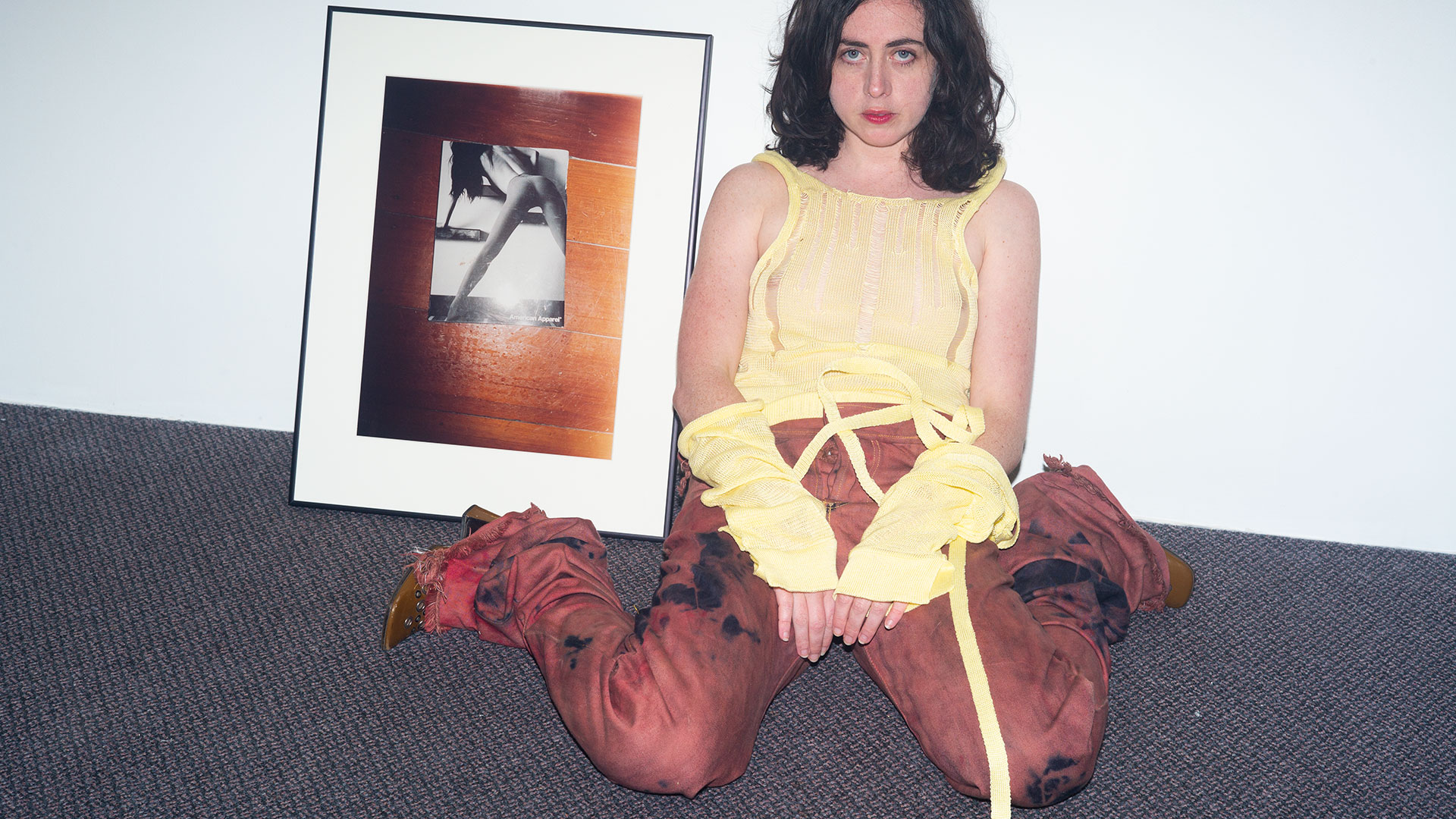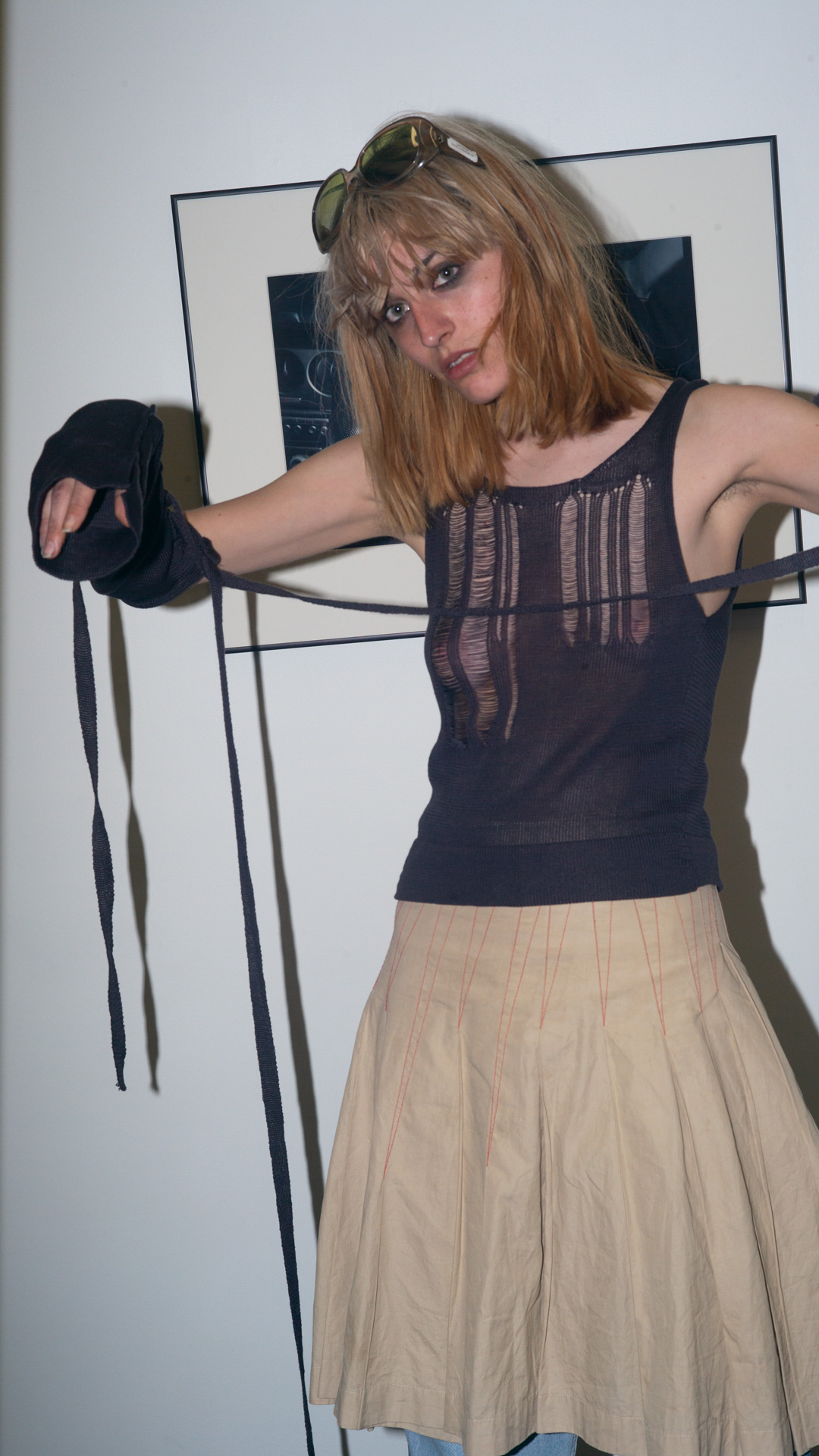
Gala Dawn O'Neill Richards
An Exploration of Knitwear's Synchronised Relationship with the Body
- RoyalGala Website https://royalgala.online/
- Instagram @royalgala_ https://www.instagram.com/royalgala_/
- Contact galadawnrichards@gmail.com
Royal Gala Knitwear
The Royal Gala Knitwear collection explores knitwear’s synchronised relationship with the body. Knitwear consists of continuous loops of yarn, forming stitches of varying tensions that transform when stretched. This movement of stitch translates into a visual communication with bodies and objects that is unique to knitted materiality. This prompted an exploration of ways tension and activation of knitted structures can be manipulated through two methods of production; domestic machine knitting and digital knitting. These methods allowed me to focus on the contrasting processes of intuitive hand-making and digital manipulation. From these I have extracted techniques which can be used to introduce negative space within the textile, to stimulate and respond to the unique tension and synchronisation of knit and body.
This graduate collection consists of six knitwear garments produced using two alternate methods of production; a domestic hand flat knitting machine and a digital Shima Seiki knitting machine. Each garment has been designed to visually communicate the synchronised relationship of knitwear with a specific part of the body. This is achieved through controlled technique's applied to the knitting to reveal negative and positive space. Knitting techniques such as laddering and holes are used to expose and activate when worn and stretched onto the body. Positive and negative space in my garments are depicted through negative space being areas of the knit which reveal the body and positive areas of the knit which conceal. These design elements start to explore the thinking behind ways the mind navigates the exposed body. Negative space is introduced onto my garments with the intention to resist and subvert the social practices of objectification, through normalising exposure of the body.
Through sampling openwork and lace on the domestic machine, I was able to extend and explore ladder techniques to introduce negative space and ways this can be applied in knit design. Controlling the nature of a ladder is a concept that interested me as a ladder is usually perceived as an inconsistency in the knit structure. The technology used to create digital knitwear can result in a translation failure when technicians interpret the designer’s concept. My time on the domestic machine, and handmade approach to knitwear, influenced my use of the digital Shima Seiki machine and the design outputs of my final collection.
The garments in the collection encourage empowerment in the wearer. An important aspect of my knitwear practice is agency-based intuitive making, which is why my introduction into creating knitwear was approached through using a Brother HK-830 knitting machine. This decision was influenced by ideas of ethical fashion and sustainable clothing production – that consumers need to change the rate at which they are buying clothing. Fashion sustainability needs to be addressed through support and understanding of the handmade, and the processes that go into making clothing. In acknowledging accessible methods of production and the quality of handmade garments, clothing production should respond to the historical example of spending more and buying less and an increased appreciation of the active participation of the maker.




